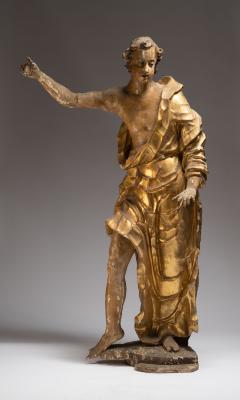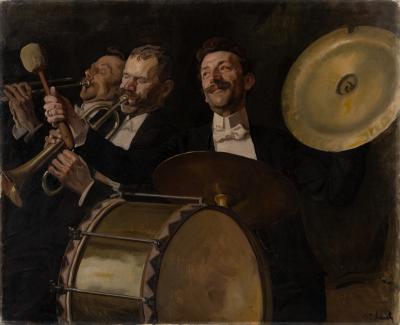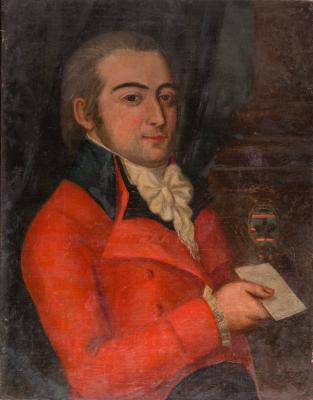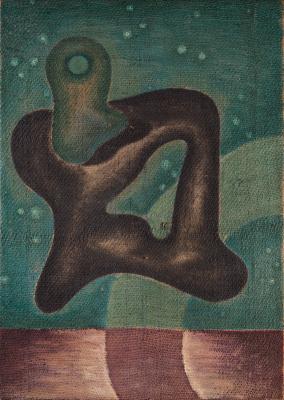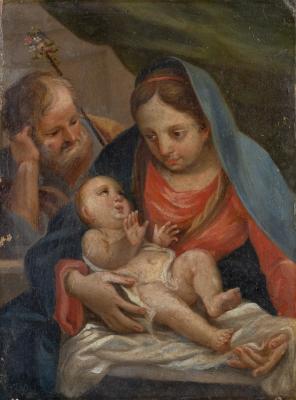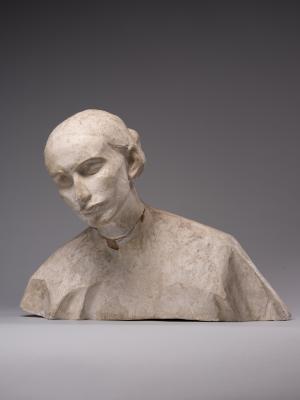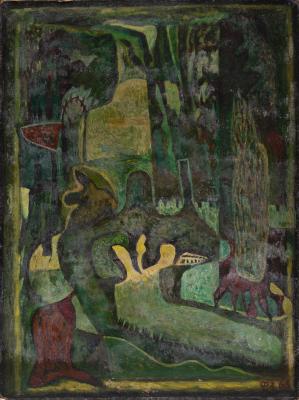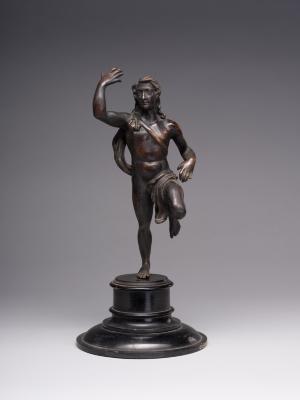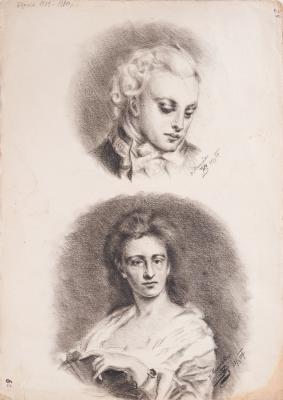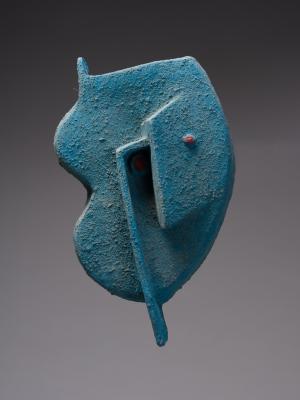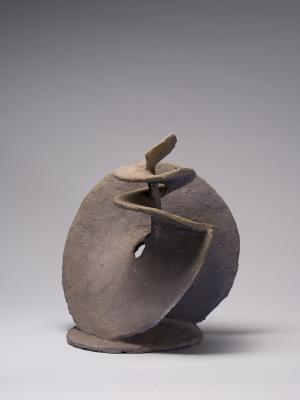The work is from the Neapolitan series. An analogue of the Lviv engraving is not found in Pinelli's available albums. However, we can confidently assume it is included in the Neapolitan album dated 1816. The watercolour engraving by Alessandro d'Anna titled Costume del Paese di Paganica, Provincia dell'Aquila, Abruzzo Ultra served as a prototype of Pinelli's work; it was performed in the late 18th century. However, in contrast to the work of the Neapolitan artist, which was saturated with many different colours, the engraving of the Roman master is stricter and more balanced in both colour and composition. In the foreground, one can see young people, namely a man and a woman, each seeming to demonstrate their clothing. A woman is dressed in an elegant national costume of the Abruzzo region but not overloaded with colours. An important role is played by the geometric ornament on the dress, sleeves of the vest with cuffs, apron, and long skirt, under which red shoes with bows are seen. On her head is a flattop headscarf; on her neck are several strings of coral beads. The woman is holding a basket of bread covered with drapery and looking to the right at a man, who is carrying himself with dignity despite the more modest style of his clothes. He stays with a stick near a large boulder while a young beauty walks past it. The man is wearing a long blue camisole put over a red vest, knee-length yellow trousers, white stockings, black shoes, and a black hat – the typical clothing of a gentleman in the Kingdom of Naples. The action is taking place in the background of green trees, behind which one of the peaks of the Apennines is seen in the distance.
Paganica is a village (now a town) between the mountain ranges in the heart of the Apennines, near the provincial centre of L'Aquila.







